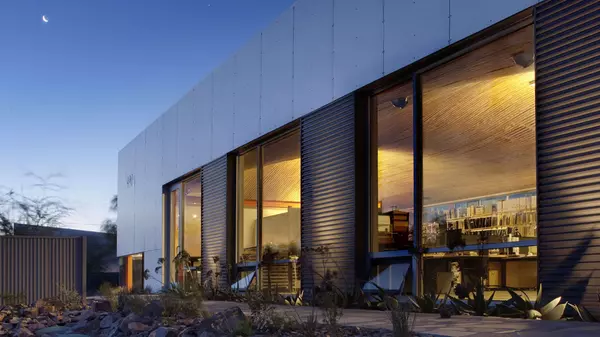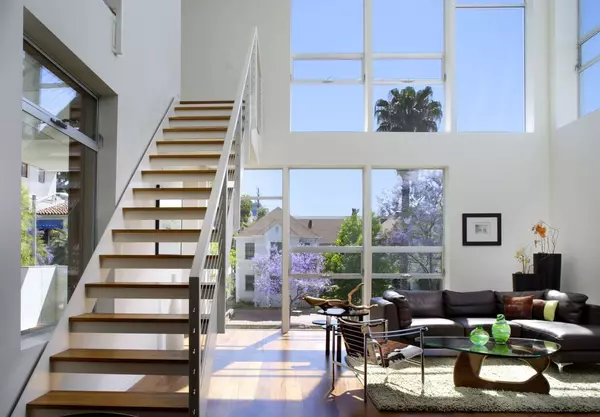Falling Mortgage Rates Could Unlock These 10 Housing Markets

Mortgage interest rates have been steadily decreasing for the last month and are expected to remain in the low 6% range through the end of 2025, raising the prospect of finally drawing jittery buyers off the sidelines.
However, the impact of declining mortgage rates will vary across markets, depending on how many local homeowners still carry mortgages, according to a new mortgage status report from Realtor.com®.
Cara Ameer, a real estate agent with Coldwell Banker in Florida and California, tells Realtor.com she has been working with a family who has been effectively priced out of the Orange County, CA, housing market for the last three years.
"They have been sitting on the sidelines ever since, as they felt rates were too high, which impacted the affordability of what they could buy," says Ameer.
In 2020, the married couple with two children and a baby on the way made an accepted offer on a $1.6 million single-family home in the sprawling master-planned community of Mission Viejo.
Ameer explains that the buyers were counting on a cash gift from their parents to boost their down payment, but the arrangement fell through. To make matters worse, around that time mortgage rates started surging, derailing the home purchase.
Metros with the highest share of mortgaged homes
The average rate on 30-year fixed home loans edged down to 6.26% last week after the Federal Reserve lowered its benchmark rate by a quarter of a percentage point for the first time in nine months. Two more cuts are expected before year-end.
"In general, markets with a greater usage of mortgages will be more sensitive to rate changes while areas with a higher share of outright homeownership may see less effect from the rate decrease,” says Realtor.com economist Jiayi Xu.
In other words, metros with higher concentrations of mortgage holders than people who own their homes outright stand to benefit the most from falling rates.
It’s important to note that 81% of existing mortgages in the U.S. have a rate of 6% or lower, leaving a sizable share of homeowners feeling "locked in," Steven Glick, director of mortgage sales at HomeAbroad, tells Realtor.com.
"When the market rate sits above a homeowner's existing rate, their probability of selling drops materially," says Glick.
As mortgage rates near 6%, Xu expects more homeowners to break free from the "lock-in effect" currently keeping them in place, particularly in markets with high levels of home financing.
To determine how lower mortgage rates would impact the U.S. housing market going forward, Realtor.com economists studied the 2024 1-Year Estimate from the U.S. Census Bureau’s American Community Survey.

Just under 60% of homeowners carried a mortgage, and roughly 40% owned their property free and clear, according to the analysis.
Compared to 2010, the share of outright homeownership has increased nearly 8%, while the percentage of financed homes decreased around 7%.
Looking at the top 50 metros, Washington, DC, stands out for having the nation’s highest mortgage usage, which reached 73.6% last year. That means that just over a quarter of all homeowners in the nation’s capital owned their homes outright.
Among the top 10 metros where mortgages were most common in 2024, six were located in the South and four in the West. Regionally, the West also had the highest concentration of mortgaged homes, at over 64%.
Denver ranked second in the share of owner-occupied homes with a mortgage, at 72.9%, followed by Virginia Beach, VA, and Raleigh, NC, each with 70.7%. San Diego rounded out the top five with 70%.
The five additional metros marked by elevated mortgage usage were Baltimore (69.4%); Atlanta (69.2%); Seattle (69.1%); Portland, OR (68.5%); and Richmond, VA (68.3%).
"Places with younger households and newer housing stock tend to have more owners with mortgages," says Glick. "When financing costs fall, those owners can actually move without giving up a low payment advantage. By contrast, markets with a larger 'free-and-clear' owner base are less affected by rate moves because many sellers there don’t face a new mortgage at all."
Buyers and sellers on the sidelines
Ameer, the Coldwell Banker agent, says that since her California clients failed to close in 2022, the expanded family of five has been squeezed into a three-bedroom condominium in Los Angeles that is too cramped for them and too far from the husband's workplace. They're working to relocate to Orange County.
"They still may need to reduce their price range from what they were originally looking at, but it will depend on available options and where rates ultimately settle," says Ameer.
On the seller side of the equation, the situation is no less challenging at this time.
"I have many would-be sellers who would sell if they could figure out where to go, but the problem is the prices got too high as well as interest rates and the cost of moving," explains Ameer.
The agent says she has been working with one such prospective seller in Florida who wanted to move to a lake community in another state but has been forced to stay put due to a lack of inventory in his desired market.
On top of that, the price the homeowner had hoped to get for his Florida property was "no longer realistic in this market," says Ameer.
The agent predicts that if mortgage rates dip below 6%, descending to the 5.5% to 5.7% range, many buyers will feel motivated enough to finally "get off the fence."
"Psychologically, this appears much better to a buyer versus a rate at 6% or more," adds Ameer.
However, Glick, with HomeAbroad, is somewhat less optimistic and says while rates falling into the lower 6% helps, "it won't make the dam break."
"For the many owners sitting on 3% to 4% mortgages, 6% still feels like a step up, so lock-in eases only gradually," he adds.
Glick cautions that it will take more than shaving a few percentage points off interest rates to revive the housing market at scale.
"Lower rates help the monthly payment (and that’s real), but they won’t completely erase the affordability gap on their own," he says.
At the same time, buyers have been flocking to new construction, where builders are able to buy down the interest rates through their preferred lenders to 3.99% to 4.99%—an incentive sellers of existing homes cannot match.
"Many sellers who bought within the last five years are just hoping to break even, or may end up making less than they hoped, so [they] don’t have the bandwidth to offer large interest rate buydown concessions on top of price reductions," says Ameer.
Categories
Recent Posts











"My job is to find and attract mastery-based agents to the office, protect the culture, and make sure everyone is happy! "
